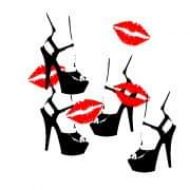
2013, Lebanon
“In the nineteenth century, the central moral challenge was slavery. In the twentieth century, it was the battle against totalitarianism. We believe that in this century the paramount moral challenge will be the struggle for gender equality around the world” (Nicholas D. Kristof, in Half the Sky: Turning Oppression into Opportunity for Women Worldwide).
In times of disillusionment, people may seek a golden age in either the past or the future. Some feminists have situated such an age in the prehistoric past, a period in which they believe women were at least equal in status with men – up to the Late Neolithic, the age of the Mother Goddess, a peaceful and egalitarian era compared to later aggressive, hierarchical and patriarchal times. The idea of a golden age is attractive but did it ever exist, and if it did, what caused its demise?
Other feminists claimed that ancient religions and civilizations were oppressive; that Judaism, Christianity and Islam carry oppressive customs from their predecessors or that these monotheist religions freed – or tried to free – women from pagan oppression; and that the Western modern civilization – Europe and North America – brought hope to the rest of the world by providing a suitable space for liberty and equality. Indeed, usual academic visions of Western Asia often describe women in this region to be oppressed, weak, needing rescue.
Generalizations and misconceptions are easily made, but reality is more mundanely complex than romantic and-or racist/imperialist visions.
Womanhood is usually defined as the state of being a woman or the composite of qualities thought to be appropriate to or representative of women. What is ‘being a woman’ or what are those qualities? The answer to this question depends on every geopolitical context, society, culture, religion, community, family and individual. Thus, defining womanhood in Western Asia for example is a difficult quest into diverse past and present collective and personal-subjective identities, perceptions and practices.
In that perspective, one of the main goals of this book is to deconstruct positivist views of Western Asian women while digging the past. Thus, it is designed to give its readers an understanding of the often forgotten foundations of many contemporary cultures and religions in Western Asia concerning womanhood, especially as they apply to the status and relationships of men and women today. Investigating the past and examining the development of gender norms, identities and roles, contribute to understanding ideas, practices, customs and trends that have shaped Asian cultures. This book summarizes a journey in the latest findings in Sciences of Religions, Cultural Studies and Gender Studies, and suggests future perspectives for research and debate. It is written in an accessible style for all kinds of public – academic and non-academic. Archaeology, text studies and ethnographic comparanda are all tools employed in this endeavor, and all chapters in this book utilize a skillful blending of these and other resources.
The study of womanhood in Ancient Western Asia has been the focus of steadily increasing interest in recent years. In large part this is due to the growing importance of Women’s Studies as an academic discipline in general, but also must owe something to the heightened awareness of social history in Asian studies. A relief when it is known that women’s history was usually neglected, due in large part to the greater interest in the public arena, i.e. the political and economic world largely dominated by men, rather than the domestic world which was primarily the realm of women. A bias towards the public sphere meant a corresponding neglect of the domestic realm of women, and thus a lack of research into the business of the household. The remains themselves bias study, in that the public world, outside the microcosm of the home, has left more textual remains (either because more was produced or by accident of survival).
Also, archaeology in this region has been dominated by biblical based research and both the Tanakh (Jewish Bible) and the New Testament are incontrovertibly ‘androcentric’ documents. Furthermore, in response to the rich textual record for all historic periods across ancient Western Asia, questions of history (conceptualized as kings and battles), religion (conceptualized as priesthoods and temples) and the lives of the elite (conceptualized as kings, palaces and luxury goods) have provided the foci for archaeological research. What this means is that domestic quarters, daily tasks, private life, personal religion and the like have found little traction among archaeologists. Indeed, even when these topics have been explored, women have rarely populated either the ancient places or the modern discussion.
Whatever the reasons, the amount of relevant published material on women in Western Asia has dramatically expanded in the past few years. Still, any historical investigation into the lives of ancient women involves individual interpretation and much speculation. One can read the ancient sources concerned with women and their place in society, but to a large degree, they are all secondary sources that were written by men about women. No ancient journals or personal diaries written by women were uncovered, so it is not known what their hopes and dreams were, or if they had any. What women felt about most political issues and the numerous wars and upheavals is also a mystery. Nor can we read about what women thought of slavery, marriage, or the fact that they had no legal rights over their children or even themselves.
The scope is truly limited, but many questions can still be asked and considered, such as: what was the role of women in their society? Were they considered citizens who had personal freedoms, or were they sequestered away and given little or no education? Was individuality and personal choice a part of women’s lives, or were they overshadowed by the patriarchal society of which they were a part? The answers may be difficult to uncover, but they are important questions to ask when one realizes that so much of ancient civilizations went on to lay the foundation of many contemporary societies. Understanding the past makes the present that much clearer and hopefully provides insight into the future, thereby helping society not to make the same mistakes again.
Womanhood’s story in Ancient Western Asia is surprising and quite diverse. There are examples of strong and independent women at times when the entire area had become patriarchal. Still, there are also practices of oppression and discrimination. One way to understand these changing systems is to look at the status of women through what one sees echoed in ancient mythology and religious rituals that favored or not the position of goddesses. Curiously, it seemed that in a society where mythology centers on a male god who is dominant, status of women is lower than others. Also, when females had more involvement in the rites and decisions of the group as reflected in the actions of the goddesses, they had fewer roles under male-dominating deities. In addition to mythology, this book focuses on religious, cultural and social practices, marriage customs and legislation. From Ancient Mesopotamia, to Arabia, Egypt, Persia and Canaan, this exciting journey to the past concludes with an insight into the present and the identification of future creative theoretical/practical paths to follow.
[hr]
This is the introduction of my upcoming book ‘Womanhood in Western Asia’, to be published in Arabic in 2013 by Dar el-Machreq, Beirut, Lebanon.
